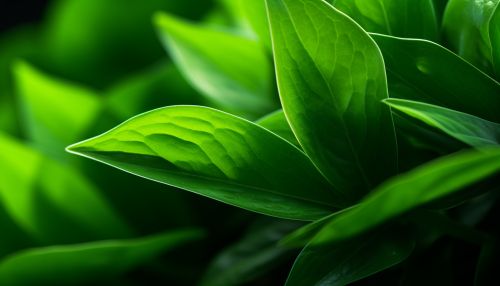Mechanisms of Plant Defense Against Abiotic Stress
Introduction
Plants, as sessile organisms, are exposed to a variety of abiotic stresses such as drought, salinity, extreme temperatures, and heavy metals. To survive and reproduce under these conditions, plants have evolved a range of defense mechanisms. These mechanisms can be broadly classified into avoidance, tolerance, and resistance strategies. This article provides a comprehensive and detailed examination of these mechanisms, delving into the molecular, physiological, and ecological aspects of plant defense against abiotic stress.


Avoidance Mechanisms
Avoidance mechanisms allow plants to evade stress conditions either spatially or temporally. These include mechanisms such as dormancy, phenological plasticity, and migration.
Dormancy
Dormancy is a state of arrested growth that allows plants to survive unfavorable conditions. It can be induced by various environmental cues such as temperature, light, and moisture. Dormancy can occur in different plant parts including seeds, buds, and bulbs.
Phenological Plasticity
Phenological Plasticity refers to the ability of plants to adjust their life cycle events in response to environmental cues. This allows them to complete their life cycle during periods of minimal stress. For example, desert annuals can adjust their flowering time to coincide with periods of high rainfall.
Migration
Migration, though not common in plants, can occur in the form of seed dispersal. Some plants produce seeds that can be dispersed over long distances by wind, water, or animals. This allows them to colonize new areas with less stressful conditions.
Tolerance Mechanisms
Tolerance mechanisms enable plants to endure stress conditions without significant reduction in growth or reproduction. These include mechanisms such as osmotic adjustment, antioxidant defense, and heat shock proteins.
Osmotic Adjustment
Osmotic Adjustment is a process by which plants maintain cell turgor under water-deficit conditions. This is achieved by accumulating solutes in the cytoplasm, which lowers the cell's osmotic potential and allows water to move into the cell from the surrounding environment.
Antioxidant Defense
Plants produce reactive oxygen species (ROS) under stress conditions, which can cause oxidative damage to cells. To counter this, plants have an antioxidant defense system comprising of enzymes such as superoxide dismutase, catalase, and peroxidase, as well as non-enzymatic antioxidants like ascorbate and glutathione.
Heat Shock Proteins
Heat Shock Proteins (HSPs) are a group of proteins that are produced in response to high temperatures. They act as molecular chaperones, helping other proteins to fold correctly and preventing their aggregation. This helps to maintain protein homeostasis and protect cells from heat stress.
Resistance Mechanisms
Resistance mechanisms involve the alteration of plant structures or functions to reduce the impact of stress. These include mechanisms such as cuticle thickening, root system modification, and stomatal regulation.
Cuticle Thickening
The cuticle is a waxy layer that covers the aerial parts of plants. It serves as a barrier against water loss, UV radiation, and pathogen invasion. Under stress conditions, plants can thicken their cuticle to reduce water loss and protect against UV radiation.
Root System Modification
Plants can modify their root system in response to stress. For example, under drought conditions, plants can increase their root depth to access deeper soil water. Similarly, under nutrient-poor conditions, plants can increase their root length to explore a larger soil volume.
Stomatal Regulation
Stomata are small openings on the leaf surface that allow for gas exchange. Plants can regulate their stomatal opening in response to environmental cues. For example, under drought conditions, plants can close their stomata to reduce water loss.
Conclusion
Plants have evolved a myriad of defense mechanisms to cope with abiotic stress. These mechanisms involve complex interactions between various physiological, biochemical, and molecular processes. Understanding these mechanisms can provide valuable insights for improving crop productivity under stress conditions.
